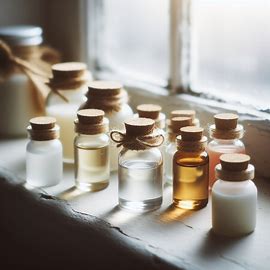Stability Testing of Cosmetic Products – A Pragmatic Guide
I have many customers who are just starting out and have no idea what shelf-life to quote for their products. The shelf-life is an indication of how long a product will last, how long it will continue to perform as intended. It is up to the Responsible Person (RP) to decide what shelf-life to assign, since they know the most about their product, but how do they decide what shelf-life to use? This article aims to provide a pragmatic guide to stability testing, enabling you to make informed decisions that ensure the quality and longevity of your cosmetic products.
A product can ‘go off’ in a number of ways. Here are some typical changes, and what to look out for:
- Colour – your product can change from one colour to another – when does it become a problem? Some colour change is normal, and it is acceptable to include a colour range in the product specification e.g. White to off-white. But if there is a drastic change, this may indicate a stability issue.
- Aroma – this can be caused by a wide range of causes and again some change is normal, but check for off-notes and products that smell unpleasant. This is unlikely to be a safety issue, but will cause an increase in customer complaints.
- Volume – is it increasing or decreasing? This can indicate a chemical reaction is taking place, and further investigation will be needed.
- pH – a small numerical change can indicate a significant change in pH because this is measured on a log scale. Most cosmetic products should be in the skin-safe zone for pH (4-8), and some preservatives only work in a narrow pH range, so the pH can be critical for product safety.
- Viscosity / feel – does the product clog the dispenser? Is it pouring differently than intended?
- Separation – the product is no longer fully mixed – this issue raises questions about the formulation.
Types of Stability Testing
Stability testing allows a brand owner to find out what changes are happening and when. The results from the stability tests can also help the RP to decide what shelf-life can be justified.
Product stability is affected mostly by heat and/or light and /or oxygen, therefore it is sensible to test for all these parameters. Keep samples from each batch to monitor and support shelf-life claims.
Room Temperature Testing
This method involves keeping samples from each batch and monitoring their performance over time. It provides insights into how your product might behave in real-world conditions. All products should be tested at room temperature as a minimum. The length of time should eventually cover the whole of the shelf-life of the product.
Elevated Temperature Testing
Particularly important for water-containing products, this involves storing samples at higher temperatures (greater than 35°C) for three or six months. This method predicts how your product might fare over extended periods, helping predict a shelf-life so you can use it before the real-time room temperature testing has been completed.
Freeze/Thaw Testing
Storing samples at room temperature or a higher temperature for a period of time (e.g. 24 hours), followed by storage in a freezer for the same period of time, repeated 3 to 5 times. This gives a good indication of longer-term stability to justify a longer shelf-life and also how the product will cope with transportation or storage in unheated warehouses.
Testing Under Light
Samples can be stored on a windowsill, or in a special light cabinet. If changes in the product are observed this could be avoided by choosing opaque packaging.
Final Packaging Testing / Packaging Compatibility Testing
Conduct stability testing using the final packaging. This not only assesses product stability but also examines the compatibility of your chosen packaging with the formulation. If the product had shown changes when stored under light, choose an opaque pack, and repeat the test again, to make sure that the pack provides sufficient protection. Also consider leaving some packs unopened to check the effect of exposure to oxygen. It is also worth considering pack fill volume – if you have a small volume in a large pack the top of the pack will contain oxygen that could degrade your product, even when it is unopened.
Safety Assessor Qualifications
MSc (Distinction), University of Strathclyde
BSc (Hons) Chemistry, University of Nottingham
Certificate - Safety Assessment of Cosmetics in the EU, Vrije University Brussels
Get in Touch
If you would like to discuss any of your products or ranges, please fill out our contact form





